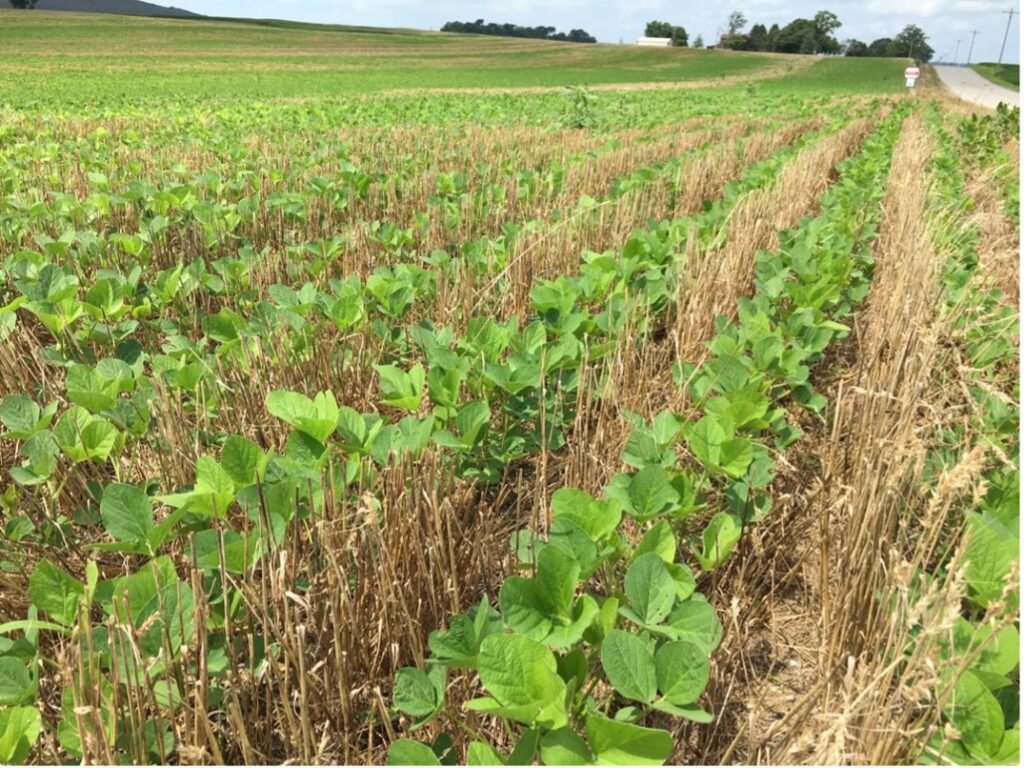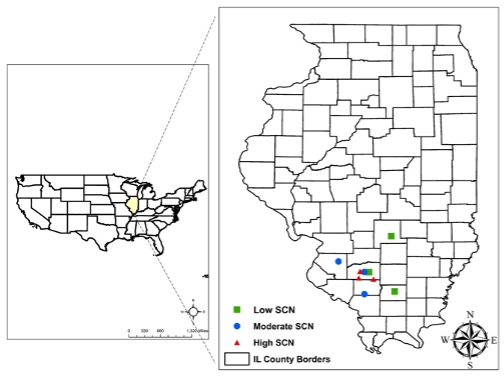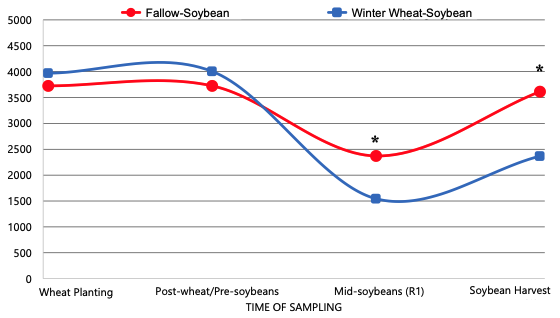While a significant share of the full-season soybean acreage in our state has been planted, double-cropping farmers are still working on managing late diseases ahead of the wheat harvest. As farmers start planning their wheat harvest and soybean planting, I wanted to continue the soybean pathology series with a summary of some research projects developed at Southern Illinois University (SIU) looking into the impact of wheat on the soybean cyst nematode (SCN).
The findings of research projects may not always be directly applicable to real-life production settings. Some recommendations may interfere with other agronomic practices, require growers to adjust their daily operations, or may not be economically feasible. This study conducted at SIU a couple of years ago was different. A project funded by the Illinois Soybean Association examined how wheat affects SCN in double-crop soybean production. Previous research suggested that wheat could lower SCN populations (Hershman and Bachi, 1995).

Figure 1. A double-cropping soybean field south of Carmi, White County, IL, in late July (Photo credit: Leo Rocha).
A brief overview of the research project:

Figure 2. Field locations selected for the field studies.
The research project included nine production fields located in Southern Illinois (Figure 2). For the project, a total of 20 acres were used, with each location covering 2.5 acres. Every field location was divided into six strips, where three were planted with winter wheat, and the remaining three were left fallow and cleared of weeds during the winter (remember that weeds can host SCN). After the wheat harvest in late spring, soybeans were planted in all six strips.
What was the impact of wheat on SCN?
Throughout the study, soil samples were collected at four different times to assess SCN counts. The average SCN counts across the nine locations are plotted in Figure 3. Note that these lines are the averages of all field locations; the entire dataset with more details is available in the full length-paper linked below (Rocha et al., 2021). At the R1 growth stage of soybean (beginning of flowering), the data showed a 31.8 percent reduction in SCN egg counts in wheat strips compared to fallow. Similar trends were observed at the soybean harvest sampling, where SCN egg counts were suppressed by 32.7 percent in double cropping strips.
Why is SCN being suppressed?
Further research projects were developed using the same soil samples to identify the mechanisms involved in the suppression of SCN by wheat. These studies revealed that more diversified microbial communities in those fields, including microorganisms that can parasitize and kill SCN, are linked to the suppression effects. The decomposing residue is likely associated with higher counts of these beneficial microorganisms. Furthermore, another study found that the decomposing wheat stubble releases certain chemicals with potential nematicidal effects contributing to the suppression of SCN.

Figure 3. The average SCN counts (eggs per 100 cc of soil) across the nine locations over the length of the study. The asterisk (*) indicates that the treatments (wheat vs. fallow) were statistically significant at that sampling.
The take-home message:
Double cropping soybean with wheat led to a 30 percent reduction in SCN counts compared to fallow, demonstrating the potential of this system to suppress SCN field populations while providing additional farm income through the wheat crop. Incorporating wheat into double-cropping systems can help growers maintain SCN field populations under damage thresholds and reduce yield losses from SCN, the major soybean pathogen in the US.
This blog post is based on a Crop Protection Network publication (CPN 5010) I wrote earlier this year. You can find that publication and the original research article covering all the project details using the links below.
Sources
Crop Protection Network article: Rocha, L. F., Pimentel, M. F., Bailey, J., Wyciskalla, T., Davidson, D., Fakhoury, A. M., and Bond, J. P. 2023. The effect of wheat on soybean cyst nematode populations in double-cropping soybean production. CPN 5010. doi.org/10.31274/cpn-20230127-0
Full-length research article: Rocha, L. F., Pimentel, M. F., Bailey, J., Wyciskalla, T., Davidson, D., Fakhoury, A. M., and Bond, J. P. 2021b. Impact of wheat on soybean cyst nematode population density in double-cropping soybean production. Frontiers in Plant Science 12:640714. Article / Google Scholar
The metagenomics study: Rocha, L. F., Bond, J. P., and Fakhoury, A. M. 2022. Wheat production alters soil microbial profiles and enhances beneficial microbes in double-cropping soybean. Frontiers in Agronomy 3:807112. Article / Google Scholar
An earlier study on wheat and SCN: Hershman, D. and Bachi, P. 1995. Effect of wheat residue and tillage on Heterodera glycines and yield of double crop soybean in Kentucky. Plant Disease 79:631–633. Article / Google Scholar




 and then
and then